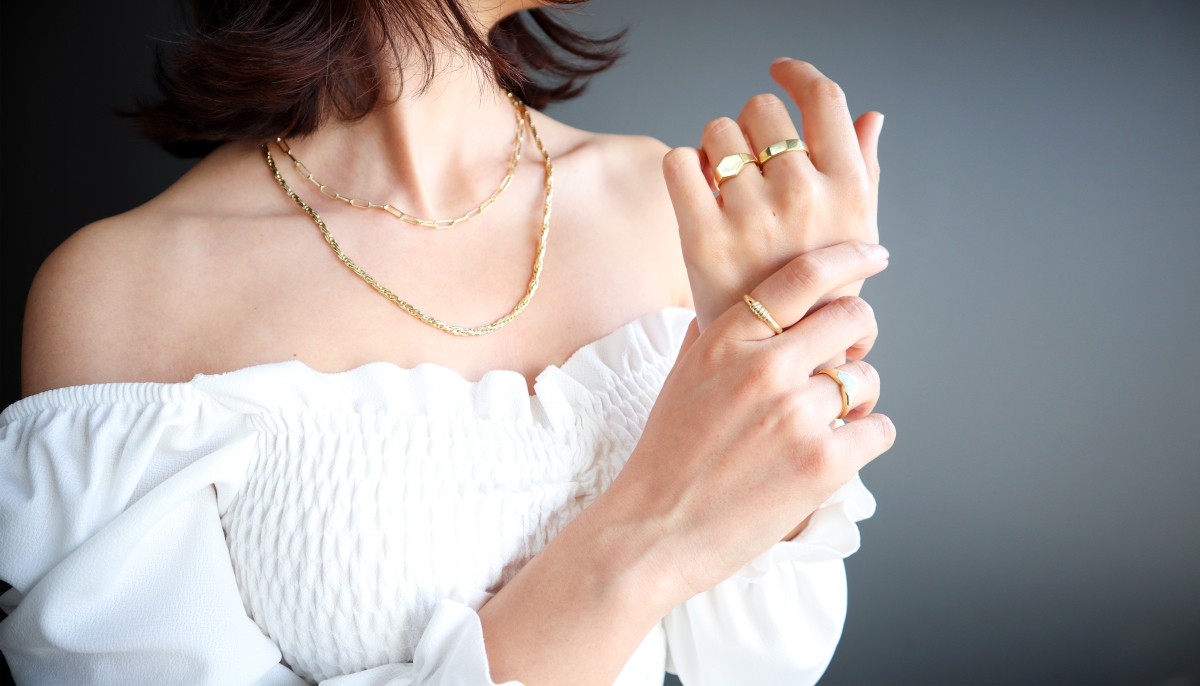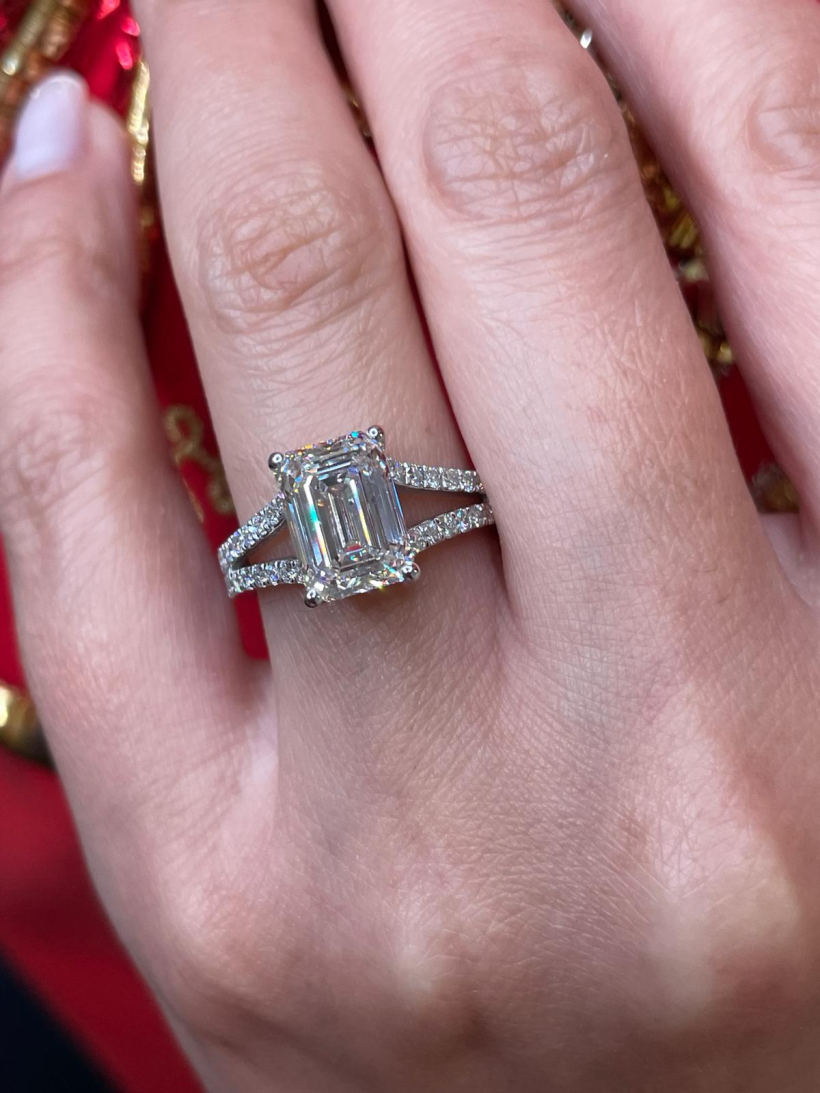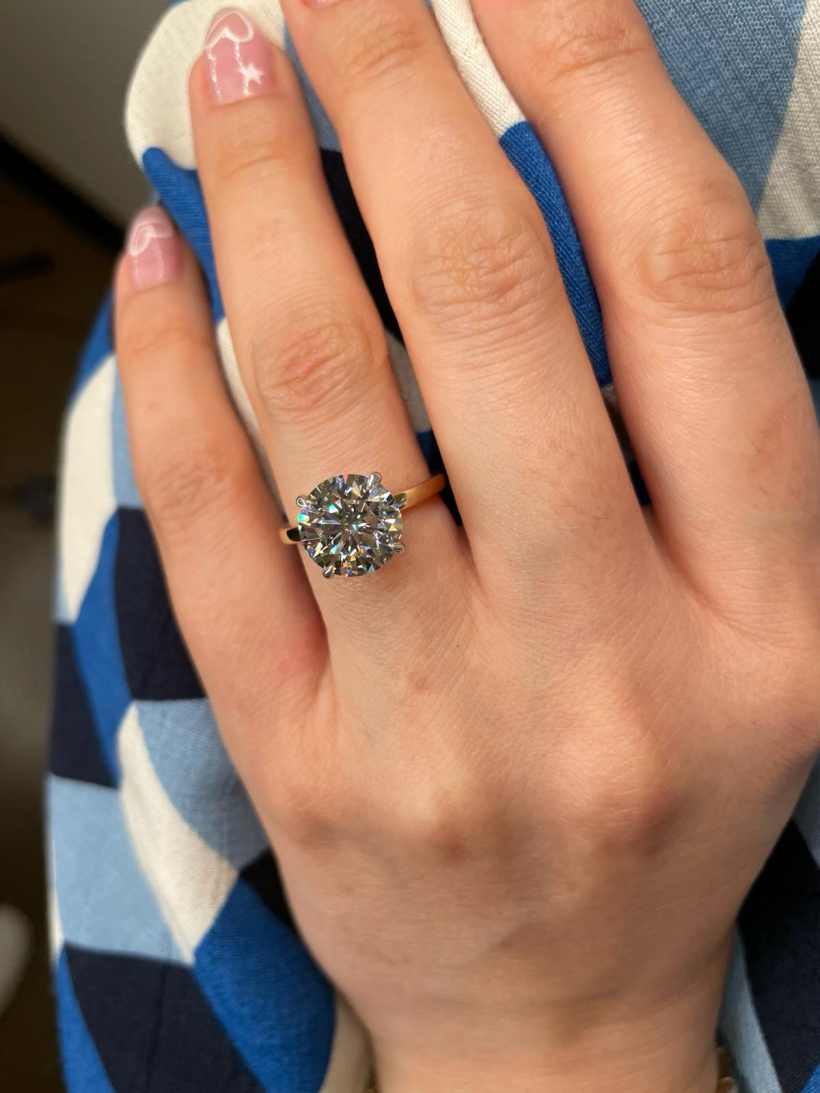It’s only natural to give gemstones (particularly diamonds) the most attention when shopping for an engagement ring. However, engagement rings are a combination of styles, designs, and materials; and the band material is a very important part of a ring’s overall aesthetic. The most common material for engagement ring bands is gold, but this still leaves you with a lot of different options. There are different colors of gold, like yellow gold, rose gold, and white gold, and these are partly determined by the number of Karats (often abbreviated to simply “K”).
But if you’re new to engagement ring shopping, you’ll want to know exactly what different numbers of “Karats” actually mean. So, what are Karats? How are gold Karats different than diamond carats? What’s the difference between 10K, 14K, 18K, and 24K gold? What’s the best Karat count for your engagement ring? Finally, where can you find high-quality gold band engagement rings at affordable prices?
In today’s guide, we will answer all of these questions and more, so let’s get started!
What Does Karat Mean In Gold?
Not to be confused with the weight of a diamond (measured in carats), Karats is a measurement of the purity of gold. In the sections below, we’ll take a closer look at the most common Karat measurements and what they really mean:
10K Gold
10K gold is a metal alloy that contains 41.7% gold. It is given the “10” designation because the ratio is 10 parts gold to 14 parts other metals. The rest of the alloy can be made up of a variety of metals, most commonly copper, zinc, silver, nickel, platinum, zinc, tin, and titanium. Since 10K gold contains the lowest percentage of gold available (though you may be able to find 5 Karat gold in cheaper rings and jewelry), it is the most affordable type of gold used in wedding and engagement rings.
But just because 10K gold is more affordable doesn’t mean it’s bad quality. It’s true that it contains a lower percentage of pure gold, but it also contains a higher percentage of stronger metals, like copper or nickel. This means that 10K gold is the most durable and scratch-resistant. 10K gold is a particularly good fit for people seeking a good deal, as well as those who live an active lifestyle and are worried about damaging their ring.
14K Gold
14K is the next step up from 10K gold and it contains 58.33% gold (14 parts gold to 10 parts other metals). Once again, the remainder of the alloy can be made up of one or more metals that add to the strength and durability of the ring. While 14K gold costs more than 10K gold, it is slightly less scratch-resistant. That said, it still contains a high percentage of strong metals, which means it is a good option for people who want to strike a balance between functionality, luxury, and affordability.
Additionally, it’s important to consider that physical damage like scratches or dents is not the only thing you should think about when choosing a gold band. Different Karat counts are more or less prone to tarnish (the gradual dulling of the metal). 10K gold is the most susceptible to tarnish, while 14K gold, 18K, and particularly 24K gold are less likely to tarnish.
18K Gold
18K gold jewelry is more valuable than 14K or 10K alternatives, as it contains 75% gold (18 parts gold to 6 parts other metals). This means that just 25% is made up of stronger metals. 18K gold rings are softer and technically more prone to damage and scratches, especially when worn daily. However, the metal is still less likely to experience any kind of damage than pure gold.
It’s also important to note that the ratio of gold to other metals affects the color. That said, it is still possible to achieve the desired color by mixing 18K gold with substantial proportions of the right kind of metal. For example, a deep rose gold band will likely contain 75% gold and 25% copper, while a white gold band may contain 75% gold and higher amounts of silver or platinum.
24K Gold
Pure gold is 24K (24 parts gold and 0 parts other metals). This means that there are no other metals except for gold, which also means that it is no longer a metal alloy. While this might sound luxurious, it doesn’t really work for jewelry. Gold is a naturally soft metal, which means it can be easily scratched or damaged, and it is not suitable for setting gemstones on its own. For this reason, the highest Karat count you are likely to see in a gold ring is somewhere between 18 and 22 Karats.
What Karat Gold Is Best?
To determine the best Karat gold for your ring, you’ll need to think about how you use it. For everyday use, 10K gold is generally the strongest and least likely to become damaged. However, 10K is more susceptible to tarnishing than higher Karat gold. As the years pass, you may need to implement more at-home maintenance and cleaning for your 10K ring to retain its natural shine. However, this is far easier (and cheaper) than getting a damaged or scratched ring repaired.
If you want the best balance of strength and value, 14K gold is likely the best option. However, this partly depends on the types of metals used to make up the alloy. For instance, titanium is very strong, resulting in an alloy that’s extremely difficult to scratch. Platinum is not quite as strong as titanium, but it does tend to be among the most expensive metals used for engagement ring bands. An alternative like nickel or copper may be more cost-effective.
Finally, 18K is the best if you want the luxury of a higher percentage of gold. It’s also a great choice if you want your ring to retain its shine with far less tarnish maintenance. And while, mathematically speaking, 24K gold is the “best” for its gold purity, it’s far from the best for use in gold rings. It’s just too soft for everyday use.
How Much Is The Gold Worth?
The price of gold on the open market can fluctuate from one day to the next. However, the global price for gold at the time a ring is produced can affect its price at the jeweler. If you research the current price of gold, you can find an up-to-date number per gram or ounce, but this won’t directly correlate to the cost of a gold ring. There are other factors to consider, such as the reputation of the brand or designer, the complexity of the design, the presence and quality of gemstones, as well as the purity of the gold. Therefore, it is difficult to equate the current value of gold to the cost of a specific ring, though this value does play a part in the total cost of a gold ring, especially a brand-new one.
How To Buy Or Sell Used Gold Engagement Rings
Do you want to find the perfect gold engagement ring for yourself or a loved one? Are you looking for the absolute best price on the market? Finally, do you want the ability to search for your dream ring by the type of gold used in the band? If so, Have You Seen The Ring is the answer.
At HYSTR, you can shop through tons of pre-owned gold rings to find the perfect one. Then, simply make an offer directly with the seller, agree on a price, and wait for one of our gemologists to authenticate the ring. As soon as the authentication process is complete, we’ll mail the ring to you and release your payment to the seller. It’s really that easy!
We hope you enjoyed our guide to 10K Vs 14K Vs 18K Vs 24 Karat gold rings! Are you currently trying to buy or sell a used engagement ring? If so, be sure to contact HYSTR today!








